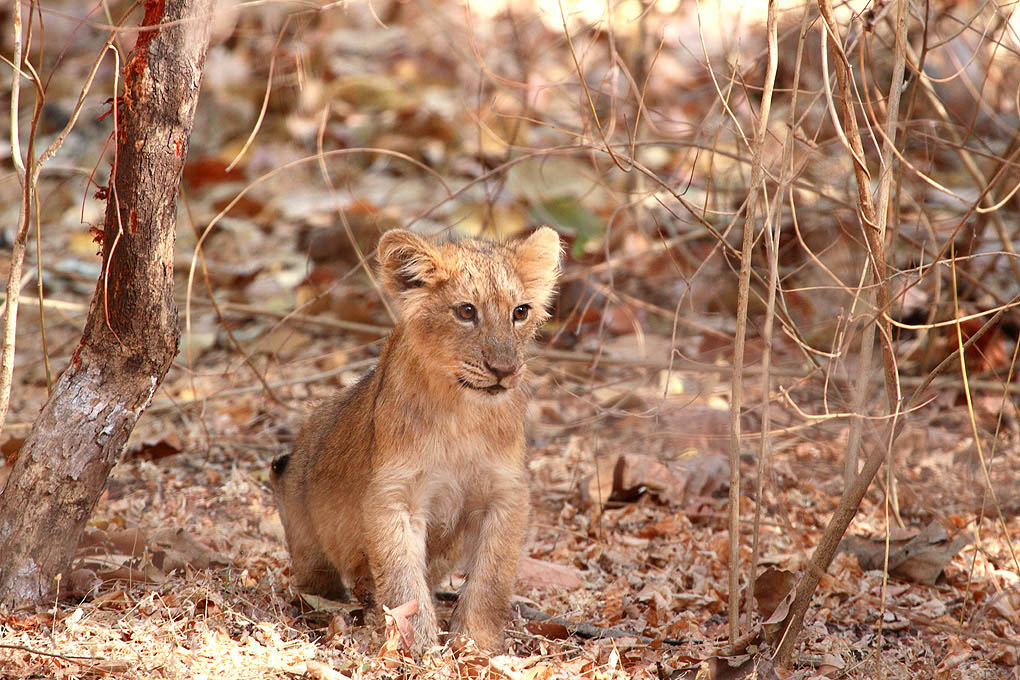The Lions of India by Divyabhanusinh
The book ‘The Lions of India’ by Divyabhanusinh is a thoughtful compilation of twenty-two articles from the late 1800s till 2008 by many authors. This book was published in 2008 and is of topical interest in view of the recent controversy about the origin of Indian lions, as well as the need to create a second home for them. From thoughts of British Army Officers who had mostly got information about the lions while trying to hunt them to the point of view of researchers, photographers, conservationists, this book has it all.
The Contents is a simple listing page containing the author’s name, title of article and the page number and it doesn’t contain the serial number of chapters.
The introduction to the book is nicely written, well researched and gives a ready summary of the historical background as well as the present day challenges. The first chapter after the introduction titled ‘Lion Shooting’ by William Rice was written in 1884 and provides information about Gir, the lions and their numbers. William Rice in the passing mentions about hunting pressure reducing the lion numbers and he believed that the thorn bushes were to be blamed for the comparatively less manes of the Indian lions. From being so constantly hunted, lions have left the open plains almost, and betaken themselves chiefly to the forests, where the numerous thorn bushes must drag out the best part of their manes, until they cease by degrees to have any left, except the very old lions. This is supposed to be the reason of the maneless lion of Guzeerat being considered a distinct species, a title imperfectly accorded.
The next article is by another army officer L. L. Fenton titled ‘The Indian Lion (Felis leo)’ and was published in 1924. Fenton writes about the presence of lions outside Gujarat Over 50 to 100 years ago they were to be found in fairly considerable numbers in the wilder parts of Gwalior, Goona, Saugor, and even, I believe, as far eastward as Allahabad. The country round Mount Abu, Deesa, and Ahmedabad, also along the banks of the Sabrmati river, as far as the Runn of Cutch were also favourite localities for them.
S.M. Edwardes and L. G. Fraser’s article ‘The Gir Forest and its Lions’ published in 1907 talks about the deforestation in Gujarat in its opening lines. They write Coming to the great Gir forest south of Junagadh city, one soon realises that it is almost the only stretch of real forest land left in Kathiawar, though the whole province must in earlier times have been very thickly wooded.
Charles A. Kincaid in his article ‘Indian Lions’ published in 1935 summarises the major reason for lion’s debacle in India. He writes ‘The Indian lion once roamed over the whole of India. In the early Sanskrit fables we hear a great deal about lions but nothing about tigers. The reason is that the tiger is a newcomer.It (tiger) drove the lion completely out of Bengal and then out of Northern and Southern India. When the English came, the lion was still holding out against the invader in Central India, Guzarat and Kathiawar; but the English completed the lion’s defeat. It was exterminated in the two former provinces and its only refuge left is in Junagadh, a state in Kathiawar, where there are no tigers and where H.H. the Nawab preserves the lion against the English sportsmen.
Sir Patrick Cadell in his article ‘The Preservation of Wild Life in India: The Indian Lion’ published in 1933 writes there were supposed to be less than a dozen in 1880, and about the same at the beginning of the century when Lord Curzon’s visit was cancelled. Lt. Col. A. H. Mosse in his article ‘The Lion of the Gir’ published in 1957 recounts the controversy surrounding Lord Curzon planning to shoot the last remaining lions and the reasons for cancellation of his lion shoot. The feelings aroused on the subject found voice in some lines published in the leading Bombay daily. Of these I remember but a word or two contained in a plea that the lions of the Gir should be allowed to remain in their last retreat undisturbed by Viceroy or Vandal. It was rather hard on Lord Curzon. In the ear of such a man a tactful word, explanatory of the real urgency of the case of that still living antiquity, the Indian lion, would surely have received a sympathetic response, and have achieved as satisfactory a result as the cruel alliteration of that Viceroy or Vandal.
There are also chapters on Lion census giving us a peek into the prevailing methodologies including baits and challenges. This book also includes two articles by S.S. Negi titled ‘introduction of the Indian Lion in Uttar Pradesh (1966) and Transplanting of the Indian Lion in Uttar Pradesh (1969) and tells us the story of the first failed attempt at lion translocation and the learnings from it.
Divyabhanusinh has also included Dr. Ravi Chellam’s article ‘The Lion’s of Gir’ where he talks about his field work in Gir which resulted in the later proposal for relocation of lion to Kuno in Madhya Pradesh. The acute need for a separate home for the lions is well described in this article as well as the later article by Stephen J. O. Brien in Pride and Prejudice published in 2003.
O’Brien writes about his stunning findings that the lions of Gir had encountered a genetic bottleneck not just in the late 1800s and early 1900s but faced it about 2100 years ago. This was found by obtaining the blood samples of lions and checking the genomic microsatellites. He writes that this genetic bottleneck has resulted in physiological changes. Asiatic lions look different in several respects from African lions. They are a bit smaller, and most have a marked skin fold running along the length of their underbelly. Males have a very shortened man, and about half of Asian lion skulls, including all of today’s Gir lions, have a bony ridge in the cheekbone that crosses an opening for nerves to the eye called infraorbital foramen. In all other field species and in African lions, the foramen is a single opening with no bridge. These physical characteristics were originally thought to be adaptations or at least modifications associated with the long time that Asiatic lions were isolated from African lions. We now believe, however, that these physical traits in Asian lions are manifestations of extremely severe inbreeding in their very recent past. The evidence for our conclusions was encrypted in their genes.
In the last chapter titled ‘Region’s Honour, Nation’s Pride: Gir’s Lions on the Cusp of History Mahesh Rangarajan summarises the politics of regionalism that restrains the relocation of lions to Madhya Pradesh for creating a second home. Though that article was written in 2008, even seven years later the case is still in Supreme Court as Gujarat has filed a review petition against the Supreme Court order for relocating lions to Kuno in Madhya Pradesh. One of the chief protagonist, the erstwhile Chief Minister of Gujarat Mr. Narendra Modi is now the Prime Minister of the country. The Lion now adorns the Make in India campaign. However, nothing much has moved as far as relocation of lions to Kuno for establishing a separate home for them and securing their future.
Divyabhanusinh’s pen has aptly summarised the plight of the lion. The lion has no votes and a democracy of humans is likely to look after only the interests of its own kind and not of the other over 370 mammalian species that call the landmass of India their home as well.
This hard bound book aptly titled ‘The Lions of India’ contains 267 pages is published by Black Kite. It is priced at Rs. 395/-. I hope the publishers of this book can make a Kindle version available so that it can reach to many more readers and help dispelling some of the recent stories doubting the origin of lions in India. It is highly recommended not only for researchers, wildlife enthusiasts, natural history lovers but also for students and the common people as well.
The Lions of India can be bought from Amazon India by clicking on this link:
- GoPro Hero 12 Black - 6 September,2023
- Leopards: The Last Stand - 2 July,2023
- Drifting in the Waters of Sundarbans - 26 March,2023













Leave a Reply